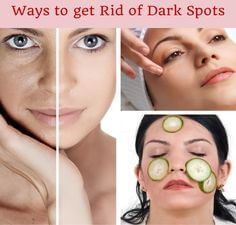Get the App
For Doctors
Login/Sign-up
Dark Spots On Your Face : Causes
The chemical that gives human skin its color is called melanin, and the production of too much in one area leads to freckles, liver spots, and other patches of darker skin. These dark spots on your face, which are also called hyper-pigmentation. These can be caused by sun exposure, hormonal fluctuations, or as a side effect of certain drugs. It's not a serious medical condition, but if you have dark spots you're probably ready for brighter, clearer skin. Treating the underlying cause, using chemical peels and other treatments, and trying natural skin lightening methods are all ways you can deal with the problem.
Learn about the different types of dark spots.
Since dark spots can be caused by a number of different factors, learning about the different types will give you a head start when it comes to figuring out how to get rid of them. Here are the three different types of hyper pigmentation.
Lentigines. These are dark spots caused by exposure to UV rays from the sun. 90 percent of people over the age of 60 have them, but many much younger men and women have sun-related dark spots as well. The spots appear scattered in no particular pattern.
Melasma. This type of dark spots are caused by hormonal fluctuations. Women might see darker splotches appear on their cheeks during times when their hormones are in flux, like during pregnancy or menopause. It's also a side effect of birth control pills and hormone therapy treatments. Melasma can also occur as a result of thyroid dysfunction .
Post-inflammatory hyper pigmentation (PIH). These are dark spots that occur as a result of trauma to the skin, which can be caused by psoriasis, burns, acne, and certain skin care treatments that are hard on the skin.
The chemical that gives human skin its color is called melanin, and the production of too much in one area leads to freckles, liver spots, and other patches of darker skin. These dark spots on your face, which are also called hyper-pigmentation. These can be caused by sun exposure, hormonal fluctuations, or as a side effect of certain drugs. It's not a serious medical condition, but if you have dark spots you're probably ready for brighter, clearer skin. Treating the underlying cause, using chemical peels and other treatments, and trying natural skin lightening methods are all ways you can deal with the problem.
Learn about the different types of dark spots.
Since dark spots can be caused by a number of different factors, learning about the different types will give you a head start when it comes to figuring out how to get rid of them. Here are the three different types of hyper pigmentation.
Lentigines. These are dark spots caused by exposure to UV rays from the sun. 90 percent of people over the age of 60 have them, but many much younger men and women have sun-related dark spots as well. The spots appear scattered in no particular pattern.
Melasma. This type of dark spots are caused by hormonal fluctuations. Women might see darker splotches appear on their cheeks during times when their hormones are in flux, like during pregnancy or menopause. It's also a side effect of birth control pills and hormone therapy treatments. Melasma can also occur as a result of thyroid dysfunction .
Post-inflammatory hyper pigmentation (PIH). These are dark spots that occur as a result of trauma to the skin, which can be caused by psoriasis, burns, acne, and certain skin care treatments that are hard on the skin.



+1.svg)
